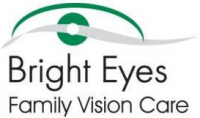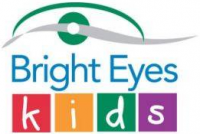Amblyopia, which is also called “lazy eye”, is a disorder that affects the visual development in children. Amblyopia is difficult to correct just with the use of contact lenses, or eyeglasses. Ambylopia can cause vision loss if it is not treated early and properly. This vision disorder affects 2-3% of the population.
What are the symptoms of Amblyopia?
Usually children that are born with amblyopia, the symptoms start in early childhood. Some signs of amblyopia in children are squinting, closing one eye in order to see better, poor general vision, headaches, and eyestrain. Usually caretakers such as parents, caregivers, doctors, or nurses notice these symptoms and recommend the child for treatment.
What are the causes of Amblyopia?
Strabismus is one cause of amblyopia. Strabismus is the eyes aligning incorrectly. Amblyopia can also be caused when there is a large difference between the eyes in refractive errors (prescription much higher in one eye than the other). For example, one eye is nearsighted, while the other is farsighted. If amblyopia is not treated, the brain will learn to disregard the vision in the eye with amblyopia. The eye that is disregarded does not grow with clear image and vision loss can be permanent. This is why it is very important to get early treatment and take your child to see your eye doctor if any signs are apparent.
How is Amblyopia treated?
There are several treatments for amblyopia, depending on the cause. Often children are treated using vision therapy, Other treatments are atropine eye drops, correct prescription eyeglasses, or surgery.
Vision Therapy
Vision therapy consists of eye exercises, which aim to teach the eyes to work together. In cases of amblyopia, the exercises require the brain to recognize the affected eye, which restores vision in that eye. Some doctors place a patch over the more functional eye, which forces the less functional eye to work harder and become stronger. The patch is generally worn for a few hours a day. Depending on the severity of the condition, treatment can last for weeks or months. Some children refuse to wear a patch, in those cases, a prosthetic contact lens is available. These contact lenses look like the regular eye, and are designed to block vision in that eye.
Learn more about Vision Therapy from the Bright Eyes Podcast.
Shaw Lens
One of the more exciting innovations for people with amblyopia is the Shaw Lens. Unlike regular glasses which correct each eye individually, the shaw lens corrects the combined image created from both eyes. When used as part of a treatment results have been excellent. What is even more amazing is that while using treatment vision is greatly enhanced without any of the stigmas of patching or dangers of surgery.
To learn more about Shaw Lenses.
Surgery
Strabismus surgery is usually required if the amblyopia is due to a large eye turn. This type of surgery aligns the eyes and corrects the problem within the eye muscles. After the surgery the eyes will able to focus better. Additional vision therapy may be required after strabismus surgery. We can help coordinate this.
Amblyopia must be treated as early as possible as there is no chance that it will resolve by itself. Untreated amblyopia can lead to permanent vision loss in that eye and reduced depth perception. Amblyopia needs to be treated promptly so that your child can have the best vision possible in childhood and later in life. When amblyopia is diagnosed and treated before age 9, the weaker eye can often develop significantly better vision. The most critical time to treat amblyopia is from 3 to 6 years of age. If you or anyone sees any signs of amblyopia, go to your eye doctor to find the best treatment for your child.

